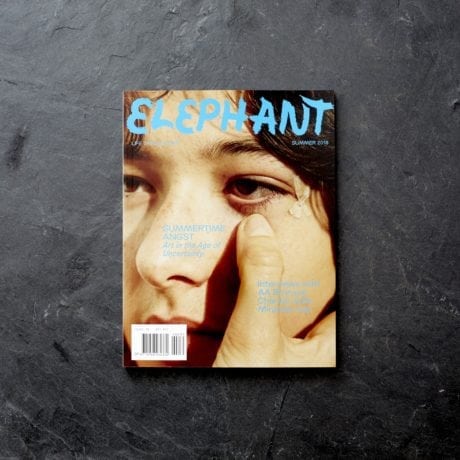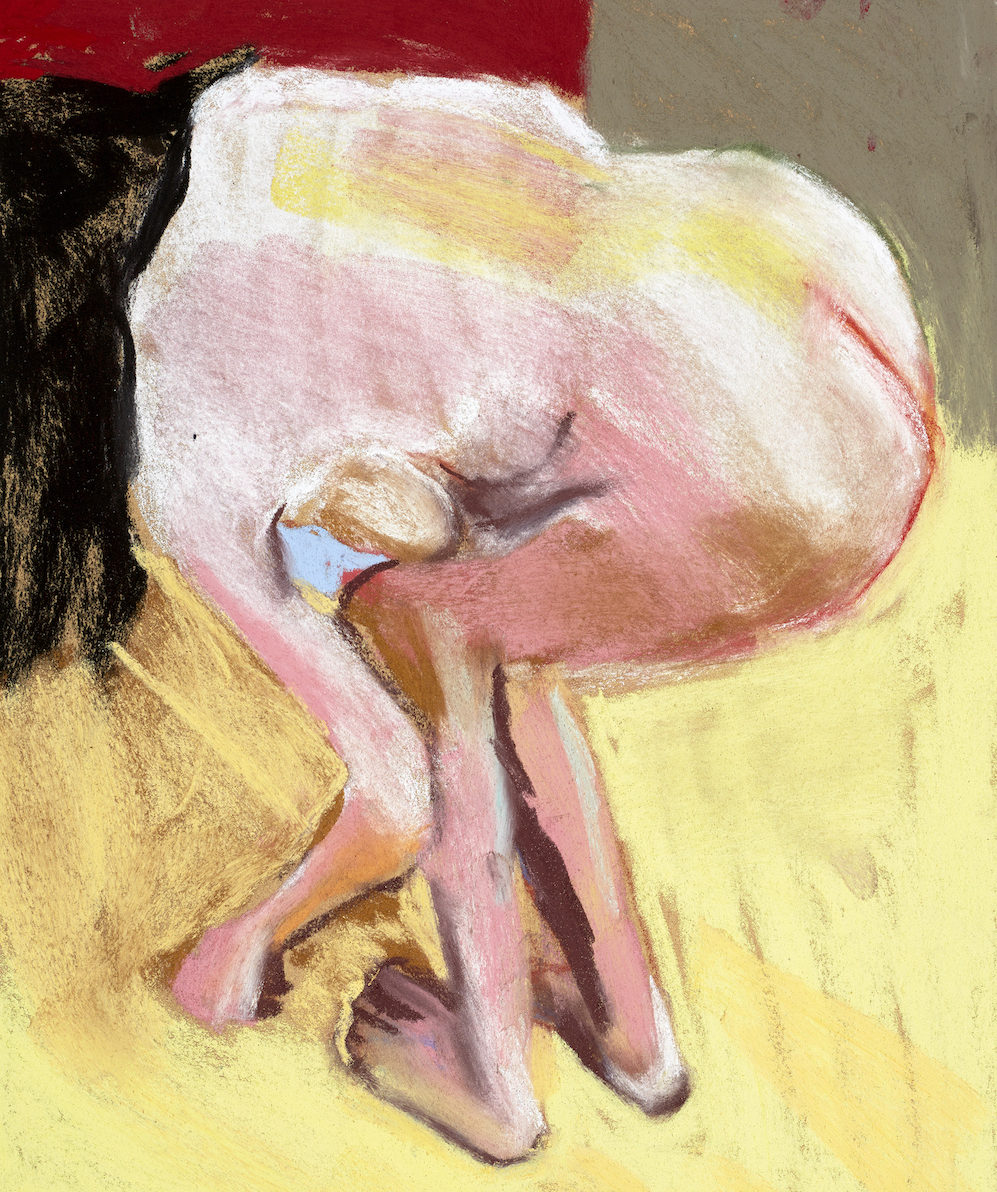
I’m waiting in the sun for Chantal Joffe, leaning against an old brick wall on a north London street which hugs the canal as it snakes through Islington. The clang and clatter of construction work cuts through the air, and builders rush back and forth from surrounding sites soon to become tower blocks. London is a city undergoing endless renewal. I peer into the collection of old industrial warehouses, now used as studios, and Joffe appears from behind a corner, gesturing me towards her. Up the hard concrete stairs behind her, through a nondescript door, we are transported away from the bustle of the street below.
Joffe’s studio is expansive, its walls lined with the figures and faces of her distinctive paintings, who seem momentarily to glance down from their canvases. These same walls show the residue of countless sittings too, flecked with paint and marked casually with brushes as if to recall an alternate impression of the people who passed through here for these paintings. Empty tubes of paint are kicked about the floor, where they meet forgotten mugs and stray pens. To enter this studio is to enter entirely into Joffe’s world. “Sorry about the mess,” she says, shyly.
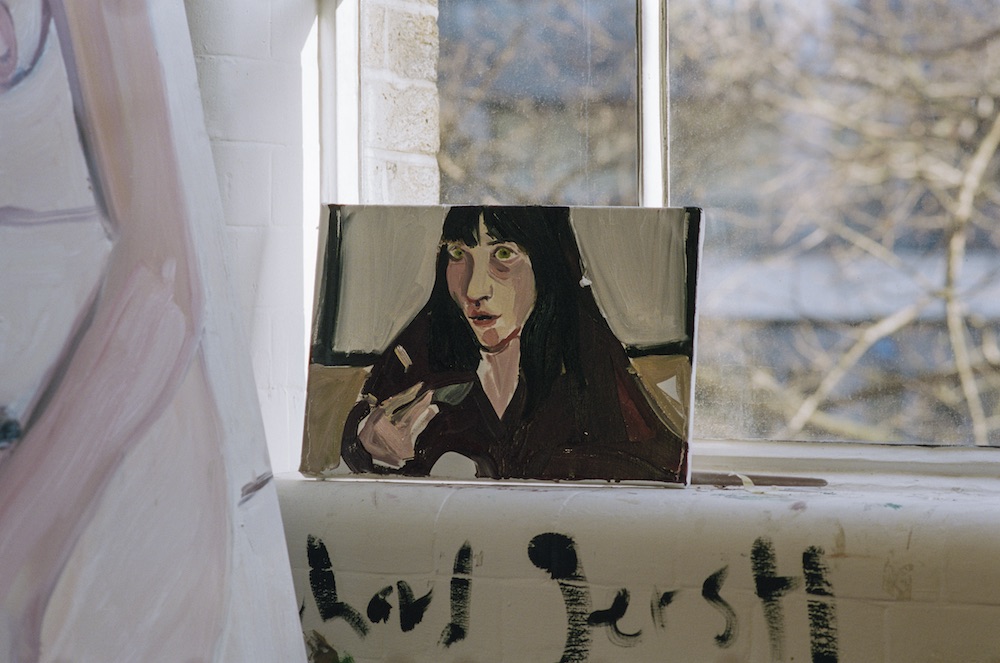
I shake my head and try to find the words to say that, on the contrary, there is something entirely inviting about this room, with its big windows and cluttered surfaces. Beyond the cliché of the artful disarray of the artist studio, Joffe’s space feels like an honest reflection of her life and work, which are so often intertwined. Her sensual yet unflinchingly candid self-portraits have traced the path of her own progression from young woman to pregnancy to motherhood. Since the birth of Joffe’s daughter, Esme, her development from newborn to adolescence has been depicted also, caught in the intimate moments of growing up that are familiar to us all. She blows out her birthday candles, or lingers by her mother’s bed in a nightie. Joffe has described her work as “confessional painting” in a nod to the confessional poetry of the likes of Robert Lowell and John Berryman; both offer unashamed observations on the self.
Looking around the studio’s crowded walls, I see many versions of Joffe and her daughter at various ages. How does it feel to look back on these highly personal paintings now? “I’m quite astonished by some of the self-portraits I did pregnant and with Esme new,” she begins. “Some of them, I’m amazed by my own vanity. More lately, I think some of my self-portraits have got a lot harder, in a way, and of course I’m older. With self-portraiture, you think you’re being as clear about yourself as you can be, but then you always see vanity when you look back at them.” She still paints her daughter occasionally, but is careful to avoid embarrassing her. “I’m always begging her to sit and she often says no. Now she’s thirteen, and it’s a very self-conscious age.”
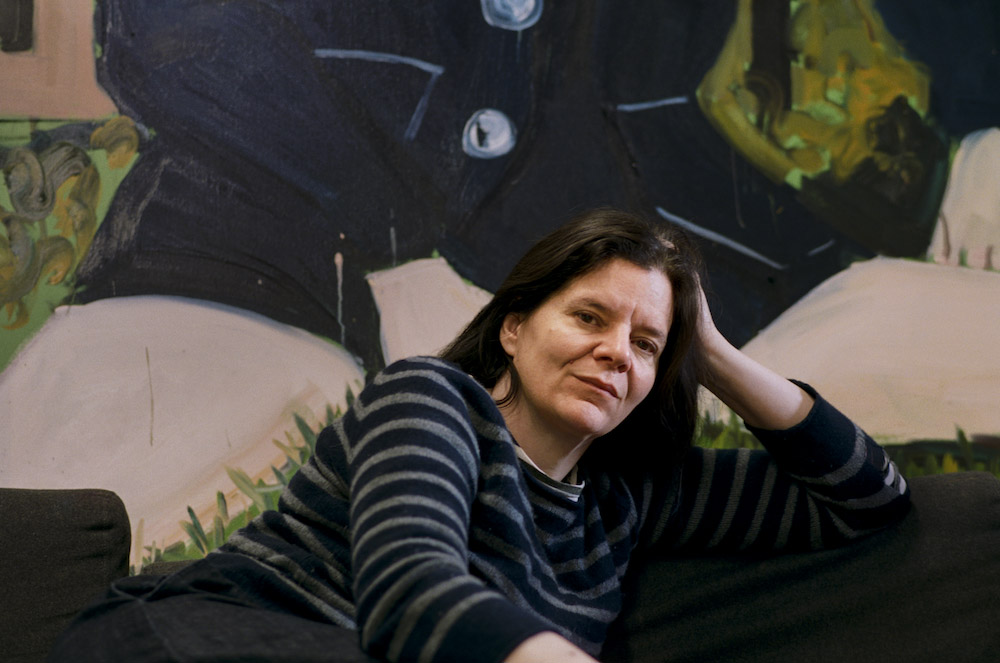
“Documenting ageing is brilliant; the change in your own self is gripping and rich because you don’t have to worry about your own feelings”
We reflect on our own teenage years, remembering the attendant awkwardness of that time. Joffe was born in Vermont, and emigrated with her family to London when she was thirteen. “I feel lucky that I got here. I still can’t believe it. I grew up in a small town, which was very narrow and white and very boring to look at.” Her time as a teenager was spent immersed in the diversity of inner-city London, before she went to Glasgow College of Art, and later to the Royal College of Art.
I suggest to Joffe that it is only in retrospect that we are able to recognize the endlessly shifting self-image that we each endure, moving from self-consciousness to acceptance. “Absolutely. I look at student photos and think ‘God, why did I feel so bad about myself? Why did I waste that time?’” she laughs. “And my daughter is doing that now. She has no idea of her own beauty. Youth in and of itself is so beautiful, and you don’t know that when you possess it. But then, the older you get the more fascinating looking at yourself becomes. Documenting ageing is brilliant; the change in your own self is gripping and rich because you don’t have to worry about your own feelings.”
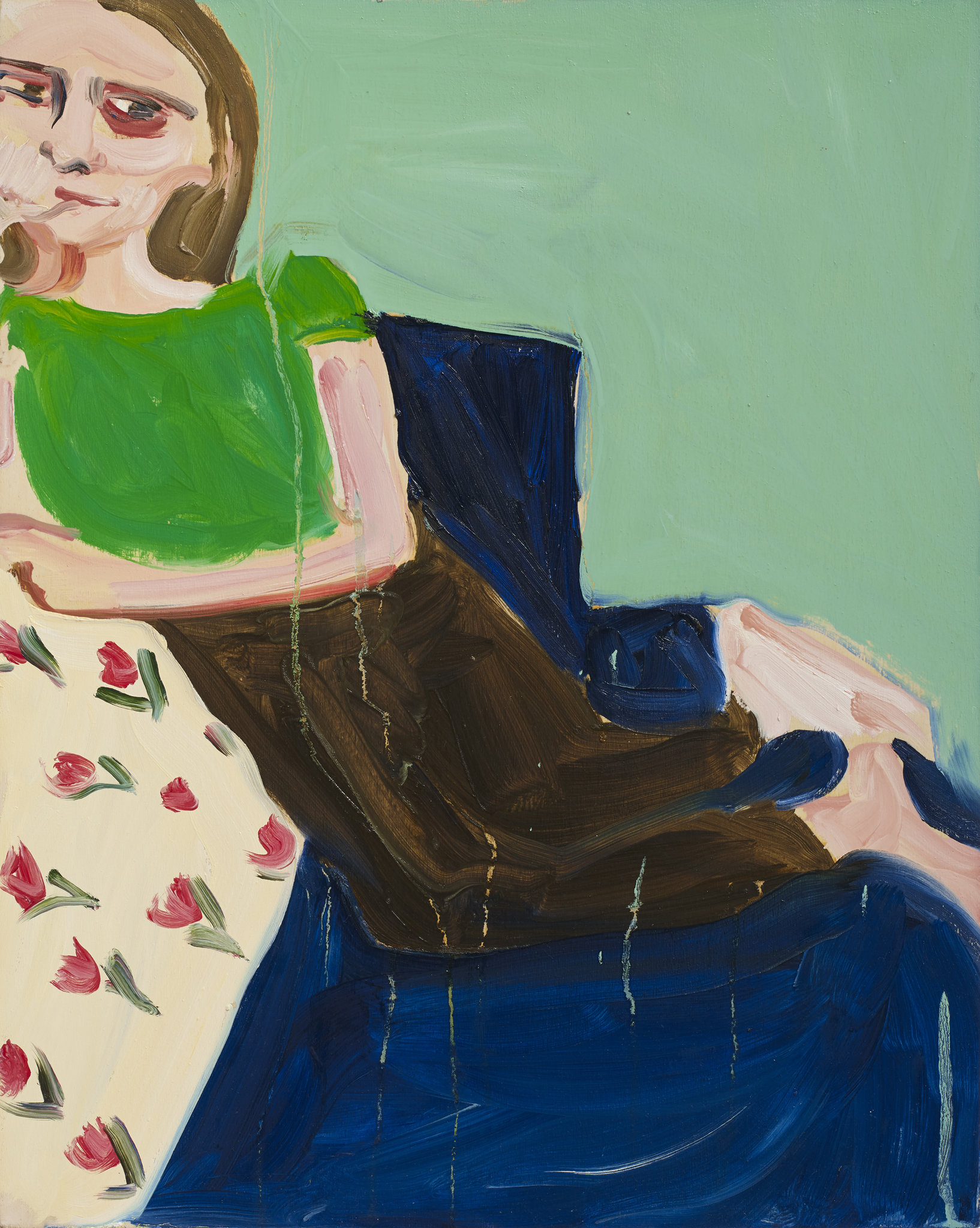
It is an apt moment for Joffe to look back on her career. A major survey of her work is on show at The Lowry in Salford until September this year, following an exhibition of pastel works on paper at Victoria Miro’s Venice gallery which closed last month. Joffe’s first public artwork will also be unveiled in the new Elizabeth Line station at Whitechapel, in London’s East End, this December. In Salford, her paintings will be displayed alongside works by German artist Paula Modersohn-Becker, who died in 1907. One of the first women to paint a nude self-portrait, she also went on to paint herself during pregnancy. Her works challenge the traditional representation of the female body, depicting it exposed and at ease.
This exhibition cements Joffe’s longstanding admiration of Modersohn-Becker, who selected the paintings to be displayed alongside her own: “She’s such an incredibly direct painter, and she’s often seen things very freshly.” She tells me that the title of the exhibition, Personal Feeling is the Main Thing, is taken from Modersohn-Becker’s diaries. “She’s always laying out in her diaries what painting is, trying to work it out and asking what makes a good painting. I liked this quote because I thought, yeah, if you look at a painting and it doesn’t make you feel something, if it doesn’t engage you in some way, there really is no point. It just struck me that personal feeling really is the main thing. It’s the only reason I pick up a brush, and it’s always personal.”

We pause for a moment, and Joffe laughingly mentions that I am sat in the striped armchair that she usually asks her models to sit in. She sits opposite me, an easel alongside her. It is an exchange that seems strangely familiar. Even in her paintings of others, Joffe frequently feels extremely present; although she is sat opposite her subject and out of sight, she can be sensed in the line of their gaze, in a frown or hint of tiredness. The relationship between painter and subject is brought to the fore, with all the tensions that arise in the time that it takes to make a painting from life.
Does she actively look to capture those moments of connection—that eye-contact—between herself and her subjects? “It’s all there. Often I’m struggling to paint on the side of the encounter, and the painting just feels a bit like the ‘after-thing’. You have an exchange with someone, and then there happens to be a painting that’s a record of that,” she says. “I always think of it like when you go to clean the bath and there’s a rim round the edge. There’s the remnant of time spent…”
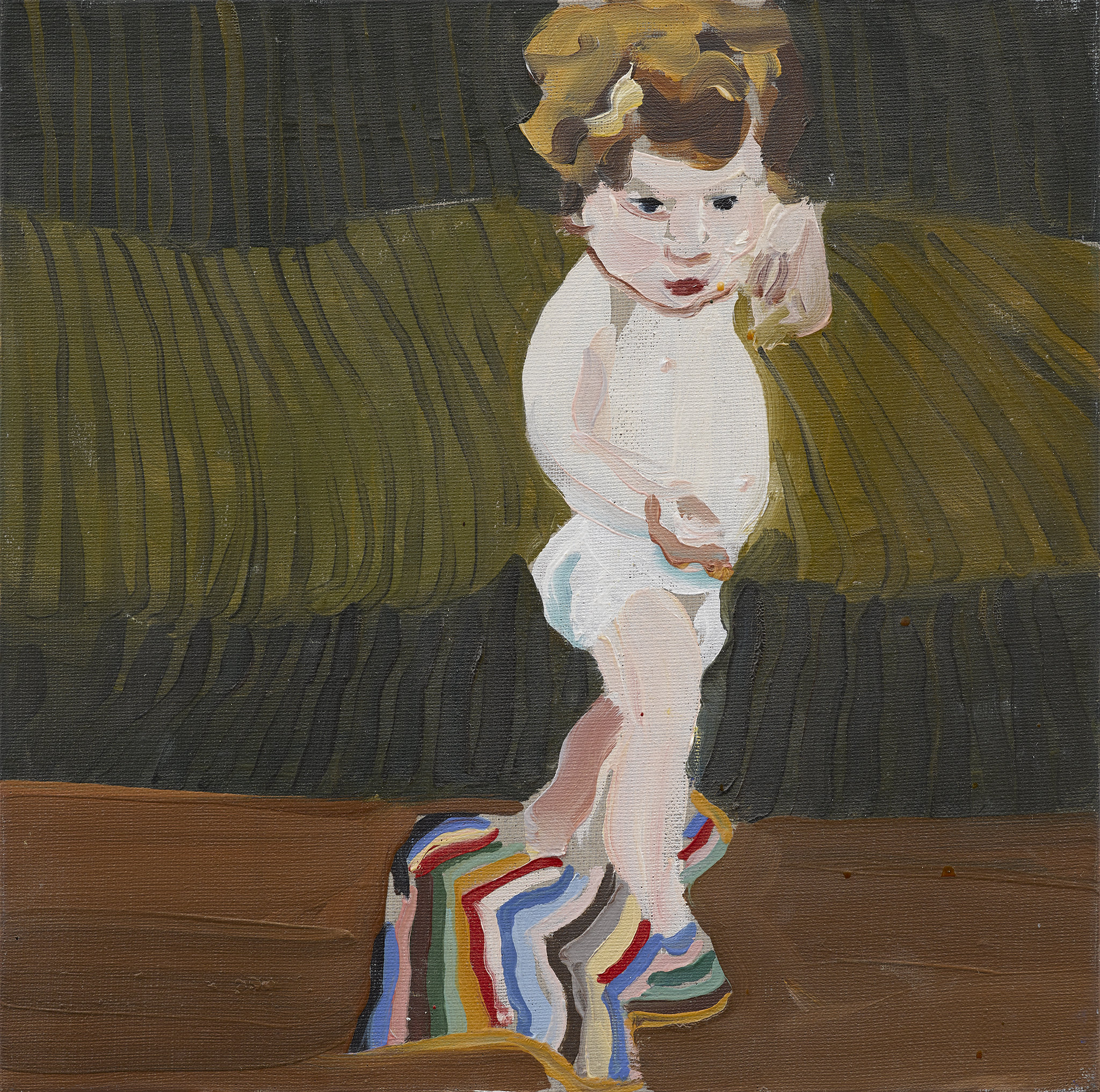
“When I was younger, I was obsessed with and fascinated by beauty in a way that I’m less interested in now”
Joffe has found it harder and harder not to paint people she knows, which is weird, she muses, because she also likes the anonymity of found images. Many of her earlier paintings are based on models seen in fashion magazines, discarded photographs or pornography. “I used to think I was giving life to fashion models, that I was somehow resuscitating them,” she remembers. “When I was younger, I was obsessed with and fascinated by beauty in a way that I’m less interested in now. I was trying to inhabit it, maybe I was trying to imagine my way into it.” Imagination is key, as the bold strokes of Joffe’s brush animate the women of her paintings, projecting their hopes, desires and all-too-human frustrations in the subtleties of their posture and expression.
Has she always been interested in how we relate to one another, and in the lives of others? “There is so much joy in seeing, and I suppose painting allows you to imagine yourself into another person. I sometimes think my whole life as a painter is trying not to be me.” She describes the paper dolls she and her sisters used to create stories with as children: “For me, that was the most happy I’ve ever been in all my life, being in that narrative. Together, we were creating a fictional world that was completely immersive and all-consuming. You chase that experience through art or through writing. I think that people become artists to recapture some experience they had as a child.”
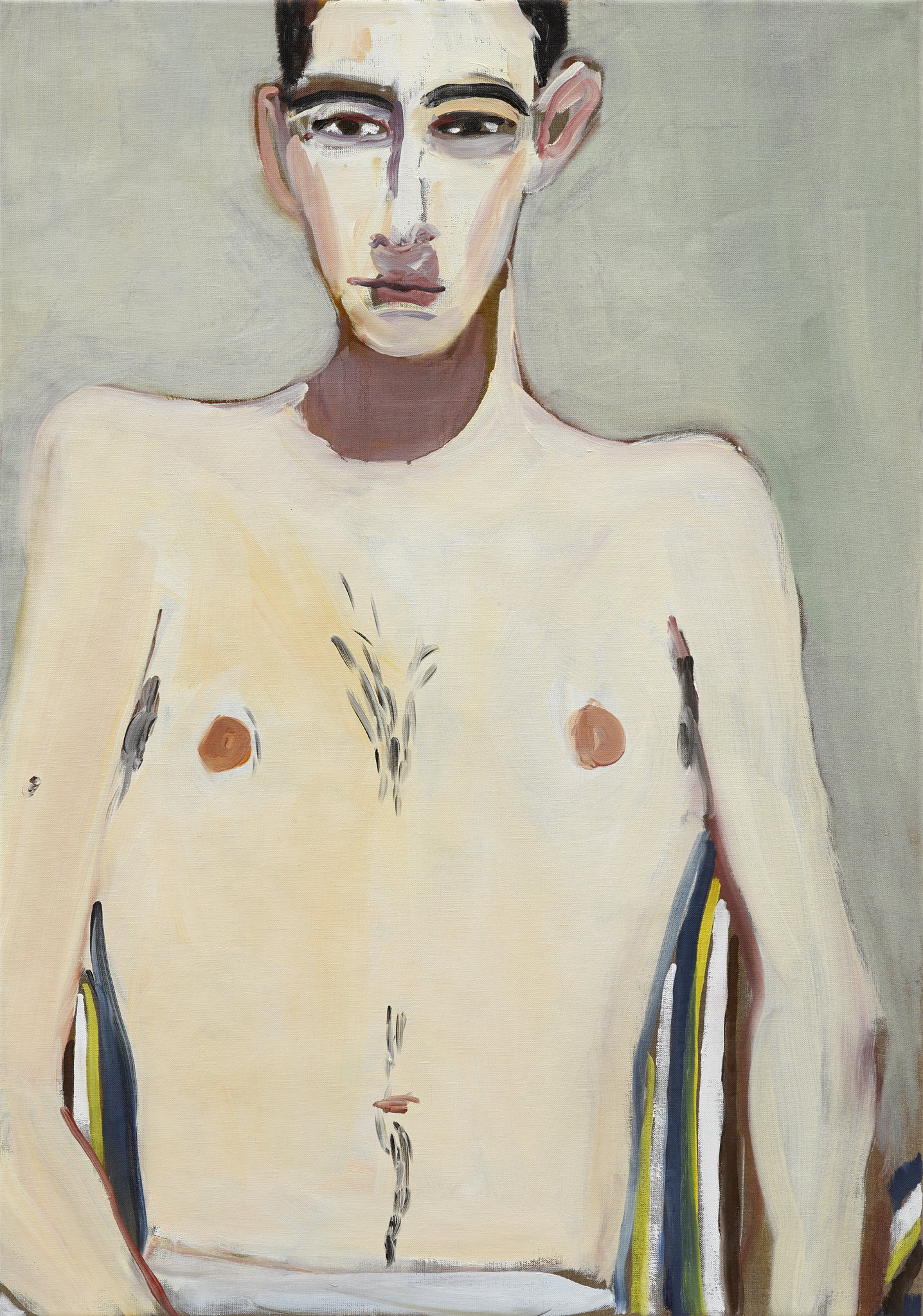
We take the opportunity to zoom out and reflect upon Joffe’s life as an artist, from childhood to art student in the nineties to the forty-eight-year-old she is today. I point out that over the years that she has been a painter, much has changed around her. Technology has transformed, and social media has made the type of intimate exposure and self-portraiture that Joffe has long practised commonplace. I am curious to hear her thoughts on this modern-day phenomenon. “I totally understand selfies, and I think it’s quite nice that everybody has access to that aspect of being an artist, of being able to say, ‘Here I am.’ It strikes me that all any of us wants is to be seen. To feel that people recognize and understand us. To feel seen.”
Our conversation is coming to a close, and we stand amidst the tubes of paint and discarded brushes. “Photos are amazing but paintings are other. In a much stronger way, painting holds time. All those thoughts that you have while you do it go into the painting,” she finishes. “It’s like it listens to the people and holds all that emotion.”
This feature originally appeared in issue 35
BUY ISSUE 35